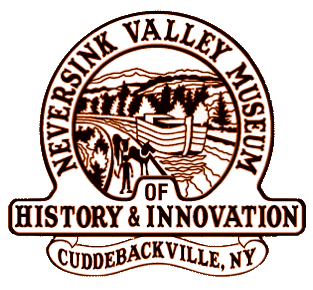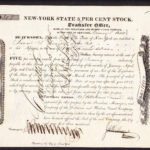Myths and Facts About the D&H Canal
The goals history museums all share are to preserve the past and make it available for its present-day and future audiences. A very important part of this mission is to separate fact from fiction. When it comes to artifacts, the current thinking in the museum community is that fakes and forgeries have no place in museum collections. Replicas may be used occasionally in museum displays so long as they are clearly labeled as such. In general, museum artifacts must have clear and solid provenance.
The stories that museums of history tell need to be based on what really happened. Received wisdom handed down decade after decade has no place in museum history. Historic facts need to be carefully researched and documented. Like physical artifacts, historic facts must be legitimate and true. History has no use for fake artifacts or facts. Like physical artifacts, facts must have excellent provenance.
Small, local history museums usually don’t have the staff or resources to research the facts upon which their exhibits and programs are based. They have little choice but to rely on conventional wisdom. The problem is that conventional wisdom is often locally biased. Local accomplishments take on a majestic aura. Many local events and objects are perceived as either the first or the biggest or the most important. Because we are most familiar with local history and usually unfamiliar with similar histories of other areas, we are led to accept grandiose local pronouncements as true.
The problem with inaccurate history is that it tends to the spectacular and overshadows the legitimate and nuanced picture of times past. That something is the first, the biggest or the best simplifies the world and eliminates the complexities in which the lessons of history are to be found. For this reason it is important to critically examine any significant assertion about historical events which does not have proper documentation from primary sources. In other words, provenance must be impeccable.
An example is provided by the oft made, but false statement that the D&H Canal was America’s first million dollar business. In a few cases the correct observation is made: that the D&H was “one of the first million dollar private enterprises in America”. Often though, the statement is made that the D&H was America’s “first million dollar stock corporation” or “first million dollar venture” or “first million dollar commercial enterprise” or “first million dollar privately funded project”. In this way the important point is lost: that the D&H Canal was part of a broad American movement to build large, private canals in the 1820’s and 1830’s.
Over the years a mythology has grown up about the D&H Canal that portrays it as something more than what it was. Along with some other canals like Pennsylvania’s Schuylkill Navigation, the D&H was undoubtedly one of the largest private endeavors of its time. However, the D&H was still somewhat less than the exaggerations used to describe it. Some of this was fostered by the D&H’s own pronouncements such as a speech by its President in 1875 and by a book it published in 1925 entitled A Century of Progress. On the other hand, the place of the D&H Canal in the 19th century American economy has not received the full attention it is due. The following five myths and five facts is a small attempt to set the record straight.
Myth #1:
America’s First Million Dollar Business Was the D&H Canal.
Actually, it’s more accurate to say that the D&H was one of America’s first corporations with a million dollars private capitalization since both the Chesapeake and Delaware (C&D) Canal and the Schuylkill Canal each sold a million dollars of stock by early 1825. On the other hand, D&H stock sales had only reached $74,208 by March 17 of that year even though its stock subscription was fully subscribed in one day, January 7, 1825. Two of these canal companies also had significant governmental assistance. The D&H borrowed twice from New York State for a total of $800,000 in order to complete all work on the canal and the C&D sold $625,000 in stock to Pennsylvania, Maryland, Delaware and the U.S. government.
Myth #2:
America’s First Private Canal Was the D&H.
There were a number of private canals chartered before the D&H. In Pennsylvania alone the Union Canal Company was formed in 1811 and the Schuylkill Navigation Company in 1815 whilst the D&H wasn’t incorporated until 1823. The Schuylkill opened for business in 1825, three years before the D&H which didn’t open until fall 1828. (The Union also beat the D&H when it opened earlier in the Spring of 1828.)
Myth #3:
The D&H Canal Held America’s First Telegraph line.
The first telegraph line in America was completed in 1844 and ran from Baltimore to Washington D.C. On April 1, 1845 this line was put into commercial service with the opening of the nation’s first public telegraph office in Washington. Three years later in 1848 the D&H Canal Company granted a right-of-way along a portion of the canalway to the New York and Erie Magnetic Telegraph Company for a line that would run from Fredonia on Lake Erie to New York City. Later, in 1852 and 1853 this line would be moved to Erie Railroad telegraph poles.
Myth #4:
The D&H Canal Shut Down in 1898.
Whilst the D&H Canal Company ceased to operate the canal in 1898 and sold it to S. D. Coykendall in that year, a significant part of the canal operated well after the canal was sold. Coykendall kept the canal open from Eddyville to Ellenville through 1901 and kept the Rosendale section open until 1913 to carry cement from his Rosendale Consolidated Cement Company. Only in 1913 was the canal totally abandoned.
Myth #5:
The Coal that Heated New York City and Powered its Factories Was Carried on the D&H Canal.
The D&H was one of a number of canals built to carry anthracite coal from the Pennsylvania coal fields. Collectively, these were called the anthracite canals. Later in the 19th century, railroads were built for the same purpose and were likewise called anthracite railroads. The anthracite coal used in New York City travelled on these canals and railroads. Of all the coal they hauled, the D&H carried only a small part. In fact, more coal was shipped on the New Jersey Delaware & Raritan and Morris Canals together to New York Harbor in the 1860’s and 1870’s than ever arrived from the D&H Canal.
Fact #1:
The Cement Used in the Statue of Liberty and the Brooklyn Bridge Was Carried by the D&H Canal.
Limestone deposits of sufficient quality to produce hydraulic cement were discovered at Rosendale, NY as the route for the D&H Canal was being laid out. When the canal went into operation it carried this cement to Kingston where it was transshipped to destinations around the world. Rosendale cement became world famous and was used in building both of these historic structures in the late 19th century.
Fact #2:
The Erie Canal Made the D&H Canal Possible.
The two most important assets (besides water, of course) required to build a canal are financing and engineering. Before the Erie Canal little money was available for canal building and there were few engineers in America. With the opening of the Erie Canal’s eastern section in 1823, a canal boom swept America and private money became readily available. The Erie Canal had also been a training ground for engineers. When the D&H Canal was built, almost all of the engineers associated with the project had been trained on the Erie.
Fact #3:
The D&H Canal Built New York City.
Though the Erie Canal was responsible for the success of New York City by opening the western frontier to commerce with the city, in a very literal sense the canal did build New York. Coal dust was used in making Hudson River bricks and Rosendale cement was made in coal fired plants. The bricks and mortar created with D&H coal were used to build the brick buildings and sidewalks of New York especially after the Great Fires of 1835 and 1845. As a result of these disasters, the use of wood declined and fire resistance regulations eventually were extended throughout the city mandating brick or stone common walls between attached buildings.
Fact #4:
The First Significant Shipment of Modern American Railroad Rails Was Carried by the D&H Canal.
All modern railroad tracks trace their heritage back to the flanged T-rails invented in 1831 by Robert L. Stevens, President of the Camden and Amboy Railroad. The first really significant use of T-rails was in 1847 on the Erie Railroad. These rails were produced at the Lackawanna Iron Works in Scranton and carried on the D&H Canal to Cuddebackville where they were loaded on wagons for the trip to the rail line. The rails were hauled over the Shawangunk Mountains on the Mount Hope – Lumberland Turnpike to Otisville. At Otisville, the first batch of rails was used to construct the rail line to Port Jervis going over and down the western slope of the Shawangunk Mountains.
Fact #5:
The D&H Canal Fostered the Shawangunk Millstone Industry.
Millstones made from the hard rock of the Shawangunk Mountains were well-known across America and prized by millers nationwide. Quarried from a narrow strip ten mile long between Kerhonkson and High Falls on the northwestern slope of the Shawangunk ridge, these stones were known as Esopus Millstones. They were shipped on the D&H Canal to dealers in Kingston. Advertised extensively in the milling trade journals, Esopus Millstones could be found as far afield as Wisconsin and Minnesota. During the industry’s heyday in the 1870’s an average of about 350 tons were shipped yearly.
Copyright 2008 by Stephen Skye
Short Link:



